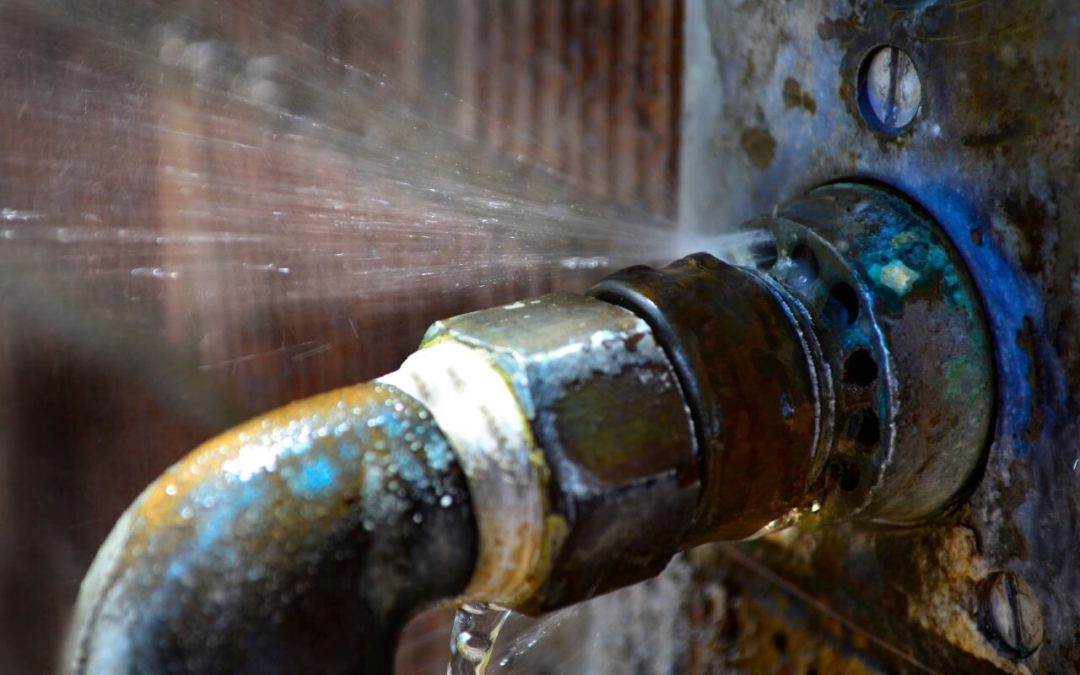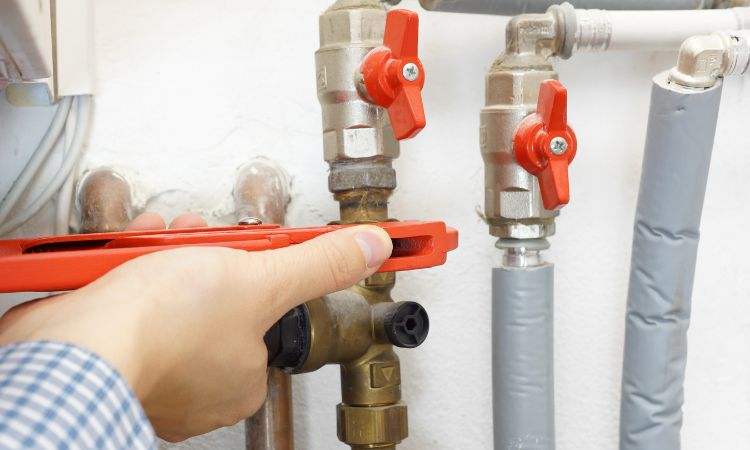Guide to Managing Plumbing Problems in Older Homes
Guide to Managing Plumbing Problems in Older Homes
Blog Article
The content underneath relating to Main Plumbing Issues Found in Old Houses is definitely captivating. You should take a peek.

Older homes typically feature appeal, personality, and history, yet they can additionally bring a host of plumbing problems. Whether you're taking care of aging pipes, low water stress, or leakages, knowing how to resolve these typical problems is critical to preserving a safe and practical home. In this guide, we'll discover the typical plumbing difficulties faced by older homes and give useful solutions to maintain your pipes in top shape.
Recognizing Typical Pipes Issues
Aging Pipelines
One of the most typical concerns in older homes is aging pipelines. Relying on the age in which your home was constructed, the pipes could be made from materials that have actually deteriorated gradually, such as galvanized steel, cast iron, or even lead. These materials can wear away, become brittle, or establish leakages, resulting in water damages and possible carcinogen.
Water Quality Screening
Older pipelines can affect the quality of your water. Conduct a water high quality examination to look for contaminants such as lead, rust, or various other contaminations that may be introduced by aging pipes.
Solutions for Typical Pipes Concerns
Replacing Aging Pipes
If your home has old, degrading pipelines, take into consideration changing them with modern materials like copper or PEX. This can be a substantial financial investment, yet it will prevent future issues and improve the security and dependability of your pipes system.
Fixing Low Water Pressure
To fix low water pressure, start by cleaning or replacing old fixtures and eliminating mineral accumulation in the pipes. If the problem persists, it may be needed to change sections of corroded pipes.
Repairing and Replacing Dripping Pipelines
For tiny leaks, you can utilize pipeline clamps or epoxy putty as a short-lived solution. Nonetheless, it's best to replace dripping pipelines totally to prevent further damages.
Upgrading Components
Upgrading old fixtures to modern-day, water-efficient versions can boost your home's pipes efficiency and minimize water usage. Look for fixtures with the WaterSense tag for the very best performance.
Managing Pipeline Rust
If your pipelines are corroded, replacing them with corrosion-resistant products like copper, PVC, or PEX is the most effective option. Routine assessments and water high quality upkeep can assist avoid even more corrosion.
Low Tide Stress
If you're experiencing low water pressure, it could be as a result of natural resources, deterioration inside the pipes, or old components that are no more functioning efficiently. This can be a significant hassle, especially in locations like showers and sinks.
Leaking Pipes
Leakages are one more frequent problem in older homes, frequently brought on by corroded or damaged pipes. Even tiny leaks can lead to substantial water damages, mold growth, and enhanced water expenses otherwise addressed immediately.
Obsolete Fixtures
Outdated plumbing components such as faucets, commodes, and showerheads not only look old yet may additionally be less reliable, susceptible to leakages, or incompatible with modern-day plumbing requirements.
Pipe Rust
Corrosion is an usual problem in older pipelines, particularly those made from galvanized steel or cast iron. Rusty pipes can limit water circulation, create discoloration, and ultimately lead to leaks or pipe ruptureds.
Assessing the Condition of Your Pipes
Inspecting Noticeable Pipelines
Beginning by checking any visible pipelines in your home, such as those in cellars, crawl spaces, or under sinks. Look for signs of corrosion, leaks, or corrosion, which can indicate underlying issues.
Checking for Leaks
Check for leaks by examining areas around faucets, toilets, and under sinks. You can additionally check your water meter prior to and after a duration of no water make use of to detect hidden leakages.
When to Call a Specialist
While some plumbing issues can be handled with DIY solutions, there are times when it's ideal to call a specialist. If you're managing major leaks, substantial deterioration, or are unsure regarding the condition of your pipes, a qualified plumbing professional can offer expert assessment and repair.
Preventive Upkeep Tips
Regular Examinations
Frequently evaluate your pipes system for signs of deterioration. Capturing concerns early can protect against costly repair work down the line.
Water Pressure Policy
Ensure your water stress is within the advised array to stay clear of emphasizing your pipelines and components. A plumber can install a stress regulatory authority if required.
Water Top Quality Upkeep
Mount water filters or conditioners if your water quality is poor. This can safeguard your pipelines and components from damages brought on by hard water or contaminants.
Positive Pipe Substitute
If your home has older pipelines, think about aggressive substitute prior to significant problems emerge. This can conserve you from emergency situation repair services and water damage.
Final thought
Handling plumbing concerns in older homes requires a mix of alertness, preventative maintenance, and timely upgrades. By understanding the usual difficulties and recognizing when to look for specialist aid, you can ensure your pipes system stays practical and trustworthy for many years to come.
7 Common Plumbing Issues in Older Homes
Read More Plumbing Articles
Whether you're mulling over purchasing your dream period property, or you already own one, being aware of common plumbing problems in old homes can help you avoid expensive mishaps.
Many plumbing problems in old homes are similar to those faced in newer properties, but some are more prevalent in houses over a certain age. If you've recently bought an old house or haven't had your aging plumbing system inspected in a while, it's worth keeping an eye out for the following issues:
Bad Pipe Materials
Depending on the age of your home, the pipe materials used in your plumbing system may not comply with modern building codes and could be unsafe.
Lead pipes are the most dangerous type of old plumbing pipes. This metal was once used extensively for manufacturing water pipes because it's easy to shape and has a long lifespan. Plumbers also used it to solder joints between pipes made from other materials. However, lead can cause serious health problems, particularly in children. Drinking water from pipes containing lead can lead to lead poisoning symptoms, such as stomach pain and fatigue, so it's essential to replace them if you discover them in your home.
Outdated Fixtures
Even if the previous owners installed high-quality fixtures, these won't be immune to the effects of age and wear and tear. Over time, fixtures can corrode and wear down, increasing the likelihood of leaks and clogs.
Sometimes, an outdated fixture can be a minor irritation that makes using your plumbing system less convenient. However, it's best to maintain older plumbing components carefully and replace them when they show signs of failure to avoid a major leak and water damage.
Corroded or Leaking Pipes
Corroded pipes are a common plumbing issue in old homes. Corrosive substances in the water supply can gradually break down the metal used to make the pipes, eventually causing leaks. Corrosion can also cause sediment to build up, increasing the chances of a clogged pipe. All these issues take time to develop, making them more likely in old house plumbing.
Drain Problems
Older home drainage systems were often installed before the arrival of appliances such as garbage disposals, so they're frequently incapable of handling modern household usage. The result could be frequent clogs or water backing up into sinks and other fixtures.
A failing sewer line is the most serious drainage issue commonly encountered in old houses. This problem is more likely if you've remodeled your home to add more fixtures, placing more pressure on a sewer line not designed for the purpose. Eventually, the line can become clogged, causing unpleasant indoor smells, poor drainage and contaminated wastewater backing up into your fixtures.
Pipe Bellies
Pipe bellies develop when pipes buried in your home's foundation start sagging as the building settles. They create downward slopes, affecting water drainage and increasing the risk of significant blockages. You don't need to worry about pipe bellies in a pressurized main line, as the water pressure prevents the pipes from clogging, but they can cause issues in drain lines.
Root Intrusion
Root intrusion occurs when trees and other shrubs grow roots too close to your sewer line or water service line. Sometimes, the roots penetrate the pipe walls, leading to leaks and soft or wet areas in your yard.
Unfortunately, root intrusion is a more common plumbing problem in old homes. That's because older houses are more likely to have pipe bellies allowing standing water to accumulate, attracting roots to the moist conditions.
https://www.elocal.com/resources/home-improvement/plumbing/faq/plumbing-issues-in-older-homes/

I hope you liked our article on Plumbing Problems In Old Homes. Thanks a lot for taking the time to read through our article. Remember to take the opportunity to promote this blog post if you enjoyed reading it. I praise you for your time. Come back soon.
Call Today Report this page